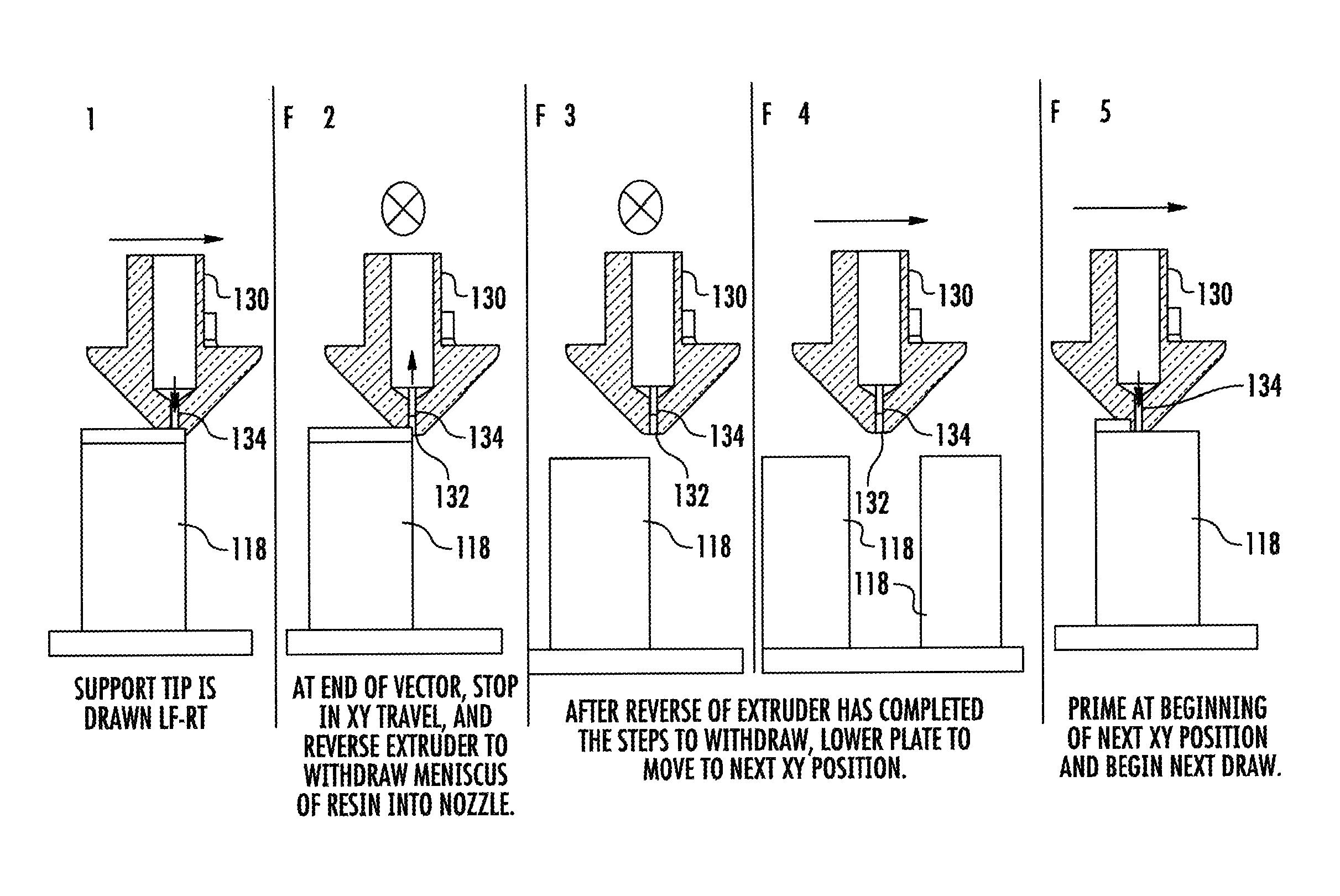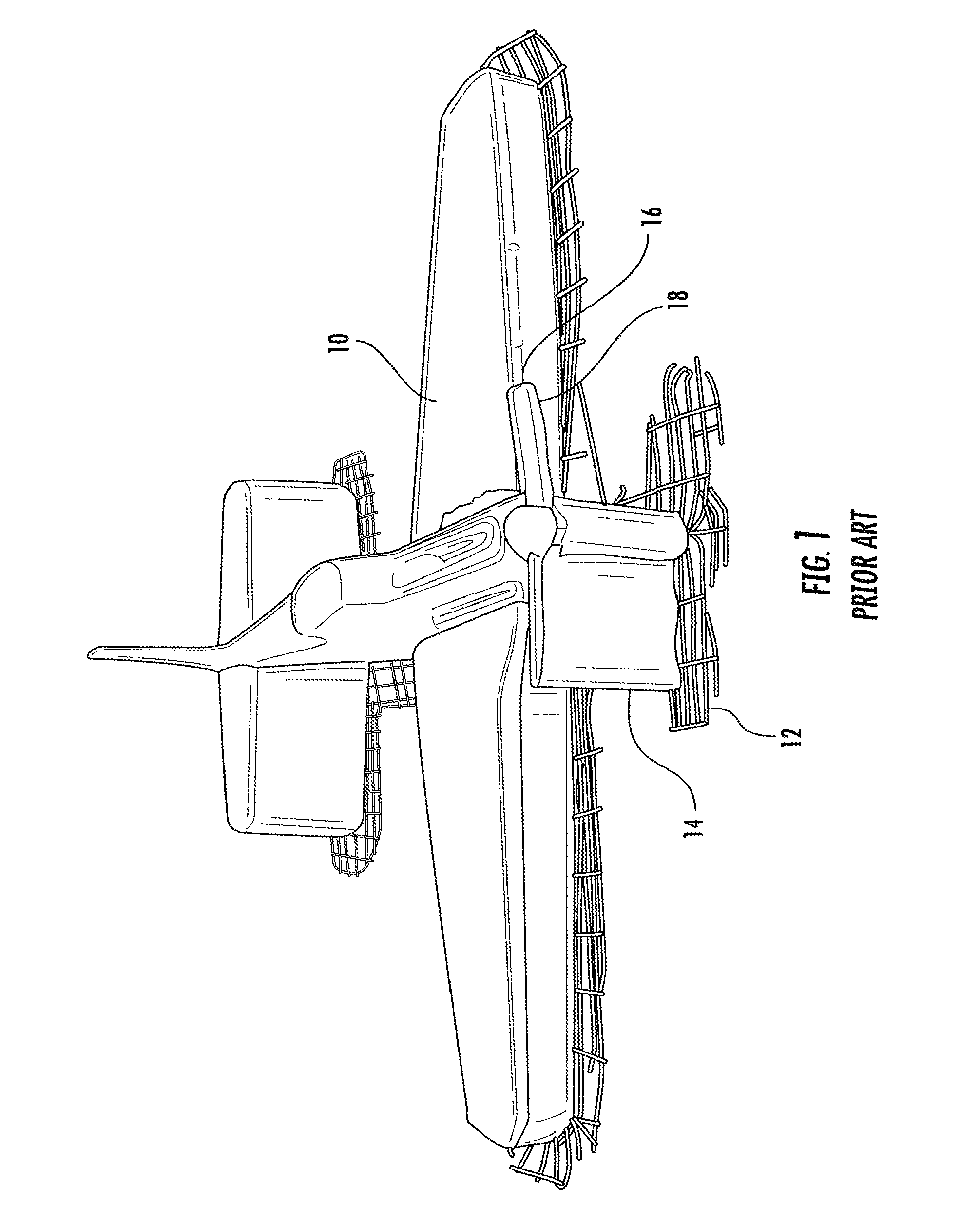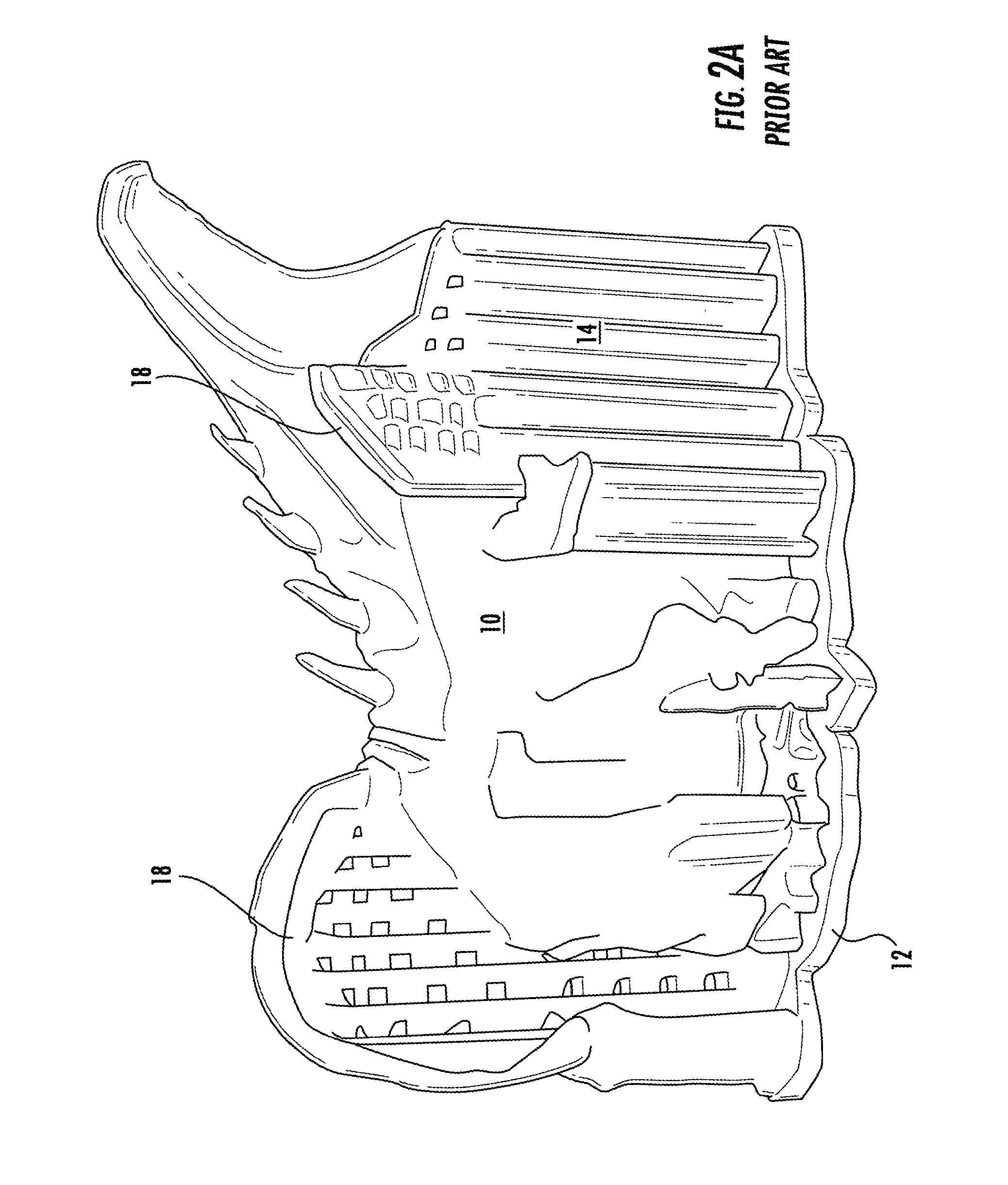Support structures and deposition techniques for 3D printing
a support structure and 3d printing technology, applied in the field of additive manufacturing, can solve problems such as other defects within or on the 3d object, and achieve the effects of improving down-facing surfaces, easy separation, and easy separation
- Summary
- Abstract
- Description
- Claims
- Application Information
AI Technical Summary
Benefits of technology
Problems solved by technology
Method used
Image
Examples
Embodiment Construction
[0026]The present invention now will be described more fully hereinafter with reference to the accompanying drawings, in which some, but not all embodiments of the invention are shown. Indeed, the invention may be embodied in many different forms and should not be construed as limited to the embodiments set forth herein; rather, these embodiments are provided so that this disclosure will satisfy applicable legal requirements. Although apparatus and methods for supporting 3D objects during printing are described and shown in the accompanying drawings with regard to specific types of 3D printing techniques, it is envisioned that the functionality of the various apparatus and methods may be applied to any now known or hereafter devised 3D printing technique. Like numbers refer to like elements throughout.
[0027]With reference to FIGS. 4 to 14, support structures and print techniques for use with 3D printing techniques in accordance with various embodiments of the present invention are i...
PUM
| Property | Measurement | Unit |
|---|---|---|
| jump distance | aaaaa | aaaaa |
| jump distance | aaaaa | aaaaa |
| diameter | aaaaa | aaaaa |
Abstract
Description
Claims
Application Information
 Login to View More
Login to View More - R&D
- Intellectual Property
- Life Sciences
- Materials
- Tech Scout
- Unparalleled Data Quality
- Higher Quality Content
- 60% Fewer Hallucinations
Browse by: Latest US Patents, China's latest patents, Technical Efficacy Thesaurus, Application Domain, Technology Topic, Popular Technical Reports.
© 2025 PatSnap. All rights reserved.Legal|Privacy policy|Modern Slavery Act Transparency Statement|Sitemap|About US| Contact US: help@patsnap.com



